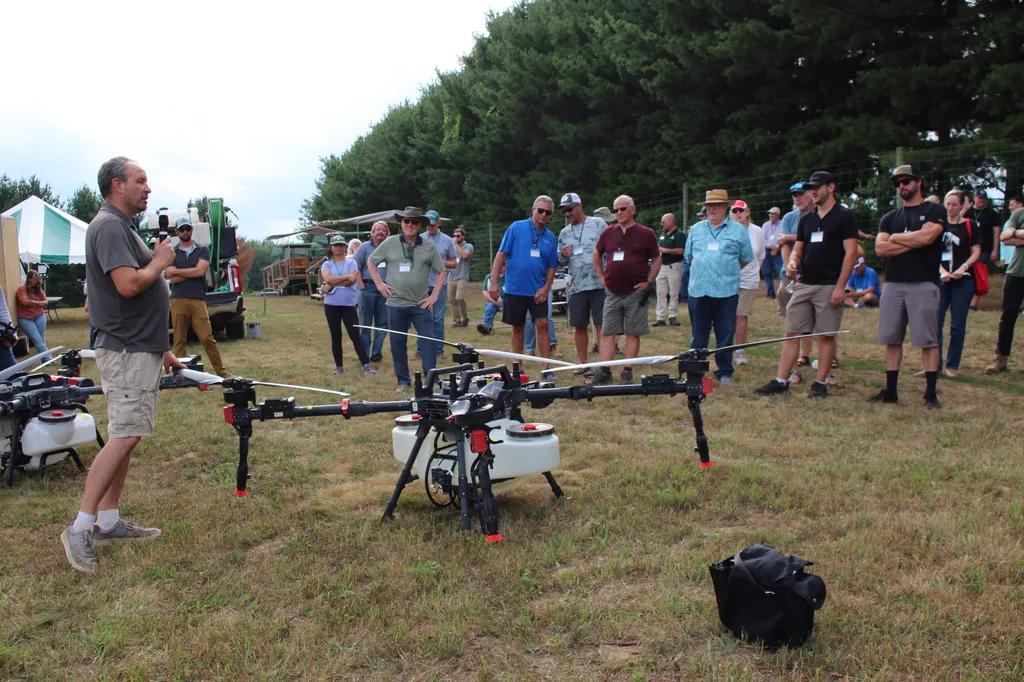In the heart of Michigan, researchers are pioneering a technology that could revolutionize how farmers manage their orchards. Andrew K. Chesang, a researcher from the Department of Biosystems and Agricultural Engineering at Michigan State University, has developed a novel approach to enhance situational awareness in agricultural teleoperation using Virtual Reality (VR). This innovation is set to transform orchard scouting and management, offering farmers a powerful tool to navigate the complex structures of their orchards remotely.
The dynamic nature of orchard environments presents unique challenges for remote visualization. Traditional methods often fall short in providing the real-time, detailed information needed for effective decision-making. Chesang’s research, published in the journal ‘Sensors’, introduces an adaptive streaming and rendering pipeline that promises to change the game. “Our method integrates selective streaming that localizes teleoperators within live maps, an efficient point cloud parser for Unity Engine, and an adaptive Level-of-Detail rendering system,” Chesang explains. This sophisticated pipeline utilizes dynamically scaled and smoothed polygons to create a highly detailed and accurate virtual representation of orchard environments.
The implications for the agriculture sector are substantial. Precision agriculture, which focuses on managing agricultural fields and orchards using real-time, accurate data, stands to benefit significantly from this technology. Farmers can now conduct architectural scouting operations remotely, reducing the need for physical presence in the orchards. This not only saves time and labor but also minimizes the risk of damage to the crops. “The results establish the viability of VR-based teleoperation for precision agriculture applications,” Chesang notes, highlighting the potential of this technology to enhance efficiency and productivity in farming practices.
The research demonstrates impressive performance improvements, with runtime performance boosts of 10.2–19.4% and framerate enhancements of up to 112% compared to existing methods. These advancements are crucial for maintaining visual continuity and preserving geometric features necessary for accurate architectural scouting. The technology’s ability to pseudo-color materials through LiDAR reflectivity fields further enhances the distinction between different elements in the orchard, providing farmers with a clearer and more detailed view of their crops.
As the agriculture industry continues to evolve, the integration of VR and teleoperation technologies is poised to play a pivotal role. Chesang’s research not only showcases the current capabilities of these technologies but also paves the way for future developments. The critical relationship between Quality-of-Service parameters and operator Quality of Experience in remote environmental perception underscores the importance of continued innovation in this field. With further advancements, VR-based teleoperation could become a standard tool in the agricultural sector, offering farmers unprecedented control and insight into their orchards.
In the ever-changing landscape of agriculture, Chesang’s work represents a significant step forward. By harnessing the power of VR and teleoperation, farmers can look forward to a future where remote management and precision agriculture go hand in hand, ultimately leading to more efficient and sustainable farming practices.

